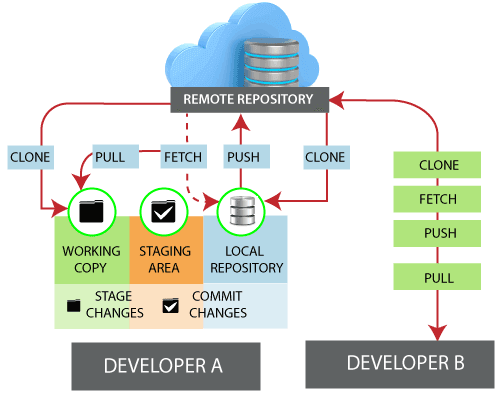

Our pull operation shows some “substance” after we download in our local repository, I have added a few files in the master branch as shown below. master and as I created the repository with a “README” so it also contains this file. I have created a new repo with the name of tst-pull-2 for our demo.īy default, it contains one branch i.e.


This is simple and straight forward – go to Github website, create an account (if you have not already) and you will lead to creating a new repository. In this section, I will show you a step by step for creating an online repository (on Github), adding files and then by using the pull command on Git Bash, we will fetch and download the branch in our local repository – so keep reading. If you are a beginner then this guide is particularly for you. The screenshot below shows current set URLs on Github on my Git Bash:Ī step by step guide for creating and pulling a remote branch If you have not set remote repo or unsure, use this command to check what the current repo is set in Git Bash by this command: The command should fetch content from the set remote repository into the local repo.
#Git pull remote branch how to
and how to merge and resolve the conflicts using Visual Studio 2019.Before explaining what is Git pull command and how it works, let me show you a simple command that pulls a remote branch from the Github repository to the local repo. Thus, in this post, we learned how to perform basic operations like Push, Pull, Fetch, etc. Selecting the Merge option allows developer 2 the option to specify the merge.Ĭlicking on Commit Merge to merge the changes, followed by appropriate Commit operation to push the changes to the repository. Now suppose developer 1 has changed the message and commit + push the changes to the remote repository.Īnd also, in parallel developer 2 has also updated the same message and has clicked on Commit and Push.Īs both have made changes and referencing to the same line of code, the developer 2 gets the failure message when he tries to push his changes to the remote repository.ĭeveloper 2 here can click on Fetch to see the changesĭeveloper 2 clicks on Pull to merge the changes and can see the conflict.Ĭlicking on Conflicts gives Developer 2 the option to Merge, Take Remote or Keep Local the changes. The other developer 2, can click on Fetch in the Synchronization page to see any incoming commits.Ĭlicking on the commit shows the details of the changes as shown below.ĭeveloper 2 can click on Pull to merge commits to the local master branch.ĭownload the changes from remote repositoryĪpplies the changes fetched to a branch in the local repository Now suppose the developer 1 makes the below changes to the program.cs and does commit all and push. Provide the Repository location URL along with the local path. Other developers or team members who need to work in the project can Clone the project in Visual Studio 2019. We can see both the updates in our remote git repository Perform Commit Staged and Push for both the changes. We will be presented with similar options for Commit Staged as in the case of Commit.

We can also use the Stage option to break the commit into smaller stages Commit will make a record of the changes in the local repository.Ĭommit the changes locally and push the changes to the remote repository.Ĭommit the changes locally, fetch the changes from the remote repository and finally push the changes to the remote repository


 0 kommentar(er)
0 kommentar(er)
